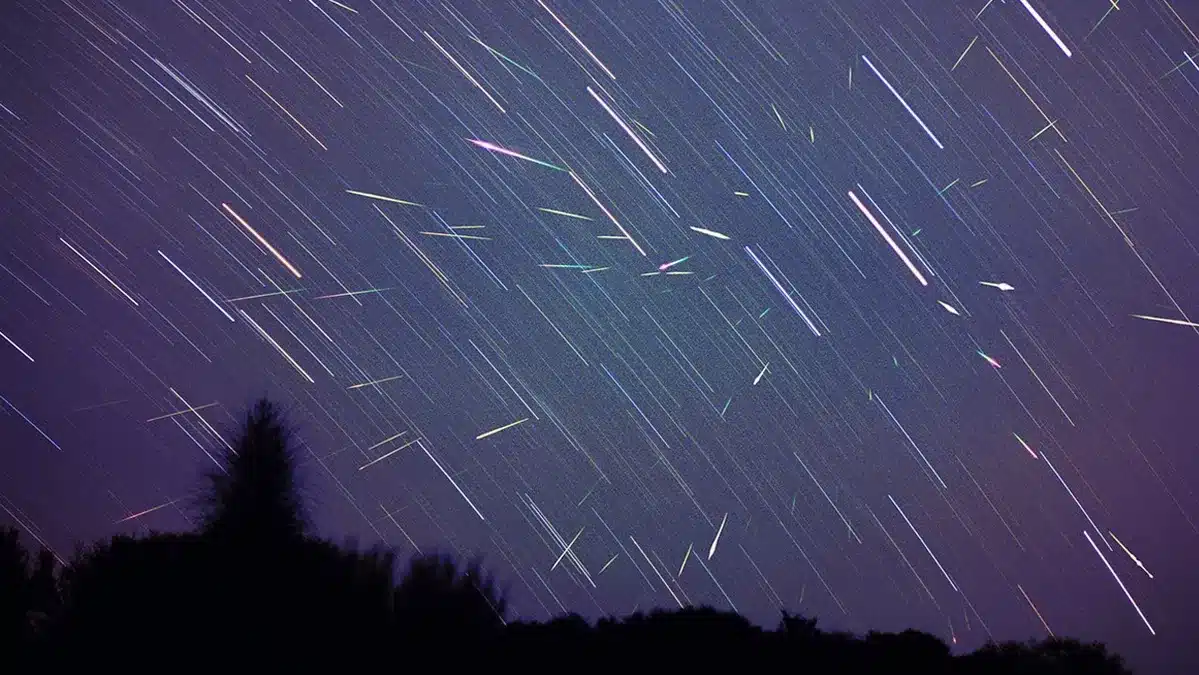The Leonid meteor shower, expected to deliver brilliant meteors with persistent trains shooting across the night sky, is next for end-of-year celestial spectaculars.
According to EarthSky, the Leonids have been active since early November and are scheduled to peak this weekend at 12:33 a.m. ET Saturday. Skywatchers could witness 10 to 15 meteors each hour in a spectacular display.
Those hoping to see a meteor from this shower are in luck because the moon will be in its waxing crescent phase, which means there will be less light interference than there is with a full moon, according to Dr. Sharon Morsink, a professor of physics at the University of Michigan.
The University of Alberta is located in Edmonton, Alberta. According to the American Meteor Society, the moon will be 23% full on the night of the shower’s peak.
While Saturday is the peak, the same rates of meteors can be seen a few days before and after. According to Morsink, who also administers the university’s astronomical observatory, the optimum time to view the shower would be after midnight in any time zone when the constellation Leo will be highest in the sky.
The Leonid meteor showers
She said that Leo is the radiant of the meteor shower, which is where the event appears to start.
“The most important thing is to avoid light pollution,” Morsink said. “You can still see some meteors if you’re in the city, but you’re not going to see anywhere near the number you get to see if you get out of the city.”
According to NASA, the Leonids are famous for producing meteor storms, which occur when a shower produces at least 1,000 meteors per hour.
According to the American Meteor Society, the Leonids generated 144,000 meteors per hour in 1966, setting the record for the highest number of meteors per hour witnessed in a meteor stream. The shower also produced higher-rate outbursts in 1999 and 2001, but humanity does not anticipate another storm until 2099, when the Earth is expected to collide with a dense cloud of debris from the parent comet, Tempel-Tuttle.
As the comet orbits the sun, it leaves a trail of pebbles and dust behind it, which causes the yearly Leonid meteor shower to occur as Earth passes through the debris on its orbital path.
Although a Leonid storm event is not expected this year, there is always the possibility of seeing a few more meteors than the estimated rate, according to Morsink.
“Getting out and seeing any meteor shower for the first time is always fun,” she said. “It’s just this fascinating connection we have with the entire solar system — here’s this comet far away from us that has been circling the sun for an incredibly long time, probably billions of years.” It allows us to communicate with objects that are quite far away.”
Keep An Eye On The Sky For The Leonid Meteor Shower This Weekend
According to the American Meteor Society, meteors from the Leonids are expected to be blazing in the sky until the shower’s finality on December 2.
If you are eager to see more, here are the remaining meteor showers that peak in 2023:
● Geminids: December 13-14
● Ursids: December 21-22
Full moons
There are two full moons remaining in 2023, according to the Farmers’ Almanac:
● November 27: Beaver moon
● December 26: Cold moon
The Leonid meteors are a prolific meteor shower associated with the comet Tempel-Tuttle. They are visible annually in November when the Earth passes through the debris trail left by the comet. The meteors appear to radiate from the constellation Leo, hence their name.
At their peak, the Leonids can produce a high number of meteors per hour, known as a meteor storm. This celestial event is popular among stargazers and astronomers due to the impressive display of bright, fast-moving meteors.
SOURCE – (CNN)











